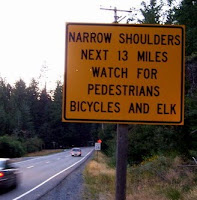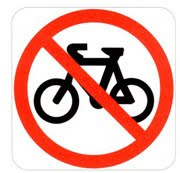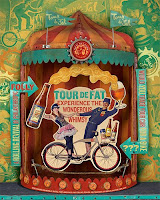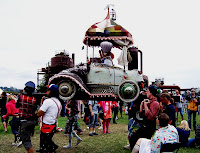If you’re a bicyclist, you’ll know that excellent feeling of accomplishment when you wear the right clothes for the conditions. As a year-round commuter in Massachusetts and now Washington, I adopted the threadbare but still true axiom that there was no bad weather, just wrong clothing choices.
Here are a few examples of the types of weather I’ve ridden in.
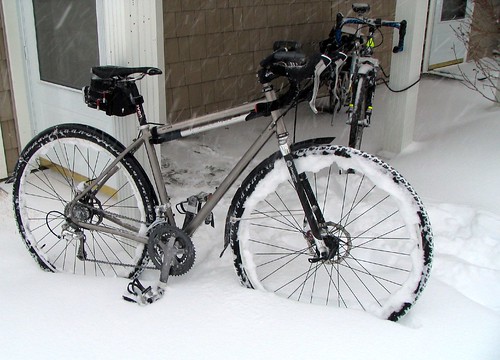
Conditions: Sleet storms when icicles formed on my helmet, sheets of ice coated my arms and bike, and only my monster studded tires kept me upright. (The picture above shows a real snowy day I attempted to ride to work, but it took 20 minutes to ride 1 mile, and I had a 13-mile commute. Part of winning a battle is knowing when to retreat.)
Clothing: Long-sleeve wool jersey, Gore-Tex jacket, two layers of gloves, fluffy ear warmers, bike shorts, long bike pants with nylon fronts and warm fuzzy insides, two pairs of wool socks, Gore-Tex hiking boots.
Conditions: 10°F, sunny, with a 10-mph headwind, when people in cars wore heavy layers and I couldn’t keep my glasses from fogging up every time I paused.
Clothing: Too many layers to count, and still my fingers and toes had an alarming white look to them when I finally got to work.
Conditions: Steady, relentless rain and 45°F, with wind so gusty and nasty that I wasn’t sure I’d be able to keep my bike on the road.
Clothing: Gore-Tex jacket, thick non-waterproof pants, lightweight long-sleeve shirt and bike shorts; one pair of wool socks and booties.
Conditions: Flood water up to my axles, across roads so deep people in Explorers didn’t brave it.
Clothing: Bike shorts and jersey; summer-weight socks and clip-in shoes.
Conditions: Muggy 90°F temperatures that left my arms and legs slick with that nasty sweat-and-sunscreen that seems to have a La Brea tar pit-like fascination to tiny bugs.
Clothing: Bike shorts and jersey; summer-weight socks and clip-in shoes; sunblock.
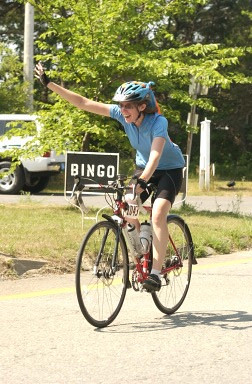
Of course, I’ve also ridden in innumerable beautiful days ranging from 30°F to 80°F — days where I’ve wondered, “Why would anybody choose to drive on a day this gorgeous?” (The picture at right shows me on my first-ever two-day ride, the MS Cape Cod Getaway in 2008, one of those delightful days when the weather cooperates perfectly.)
All this to say that, in general, I have a pretty good idea of what clothes work well in what conditions. Yet this morning, I completely misjudged the weather. Instead of having a comfortable ride in the rain, I arrived at work more than damp, having eschewed jacket and dry foot covering for an optimistic vest and sandals. Why, why, why (I asked myself) did I not wear a jacket? Because (I answered myself) it is JULY, and I shouldn’t still need my jacket and long pants.
Have you ever worn exactly the wrong clothes? What was your excuse rationale for choosing the wrong thing?


